Inactivity Alerts on Telematics Guru
How To Notify Users When an Asset Hasn't Moved
Table of Contents
Setting Up an Alert from the Inactivity Timer
Digital Matter devices can be configured to report when they have been inactive for a defined period of time. In order to make use of this functionality in Telematics Guru, an alert needs to be created.
Usages for Inactivity Timer in Telematics Guru
- Using an Alert to notify when the Digital Input is activated (i.e. device has been inactive for too long)
- Using Asset State changes to show on Live Map when Assets are 'Inactive'
- Using a custom report to detail how long Assets have been inactive at locations.
Alert Setup Walkthrough
Map the Digital Input
In Telematics Guru, you then need to set up the Digital Input against the Asset.
1. Navigate to Assets > Manage Assets,
2. Select the Asset you're applying the input to
3. Click the 'Set I/O Mappings' button.
4. Click the 'Add' Digital Input as shown below.
5. Fill out the details required for the Digital Input (I/O Number = Inactivity Digital Input selected in the system parameters), using semantic naming where appropriate and click 'Add'
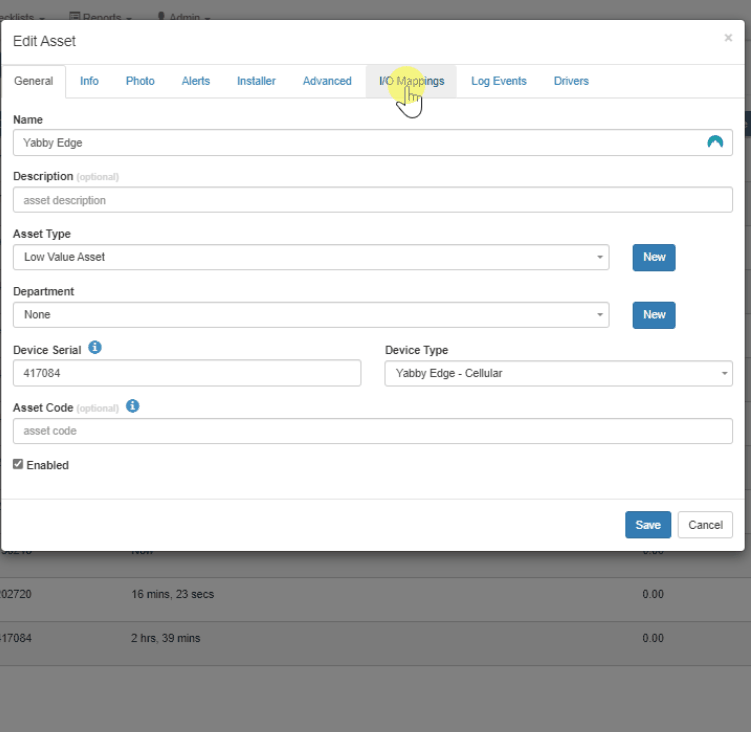
Creating the Alert
Navigate to Admin -> Alerts and select New Alert (Advanced)

Under General, Set up your notification message and then assign the Assets you've set up on Device Manager.
In the Conditions tab: Tick the Use Digital Input box and choose the Digital input you selected in Device Manager & Alert when Active.
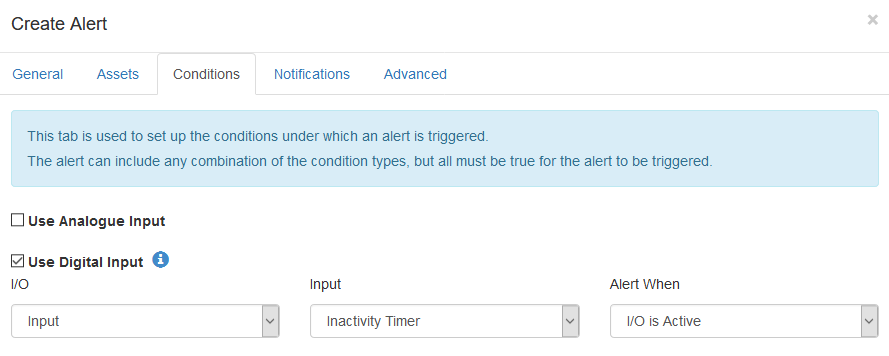
You can then select the users you wish to send the alert to in Notifications and whether you want to send a End condition alert in the Advanced tab.
Using Asset States
Navigate to Admin > Asset State Configuration and click the New button to create your Asset State. Name your Asset state semantically so you can know what it refers to from reports and the Asset Timeline and then select the asset you've previously set up.
The I/Os displayed are all available Digital Inputs on the selected device, if you do not see the Digital Input you want for the Inactivity time, please read the previous stage on how to set up your Asset on Telematics Guru.
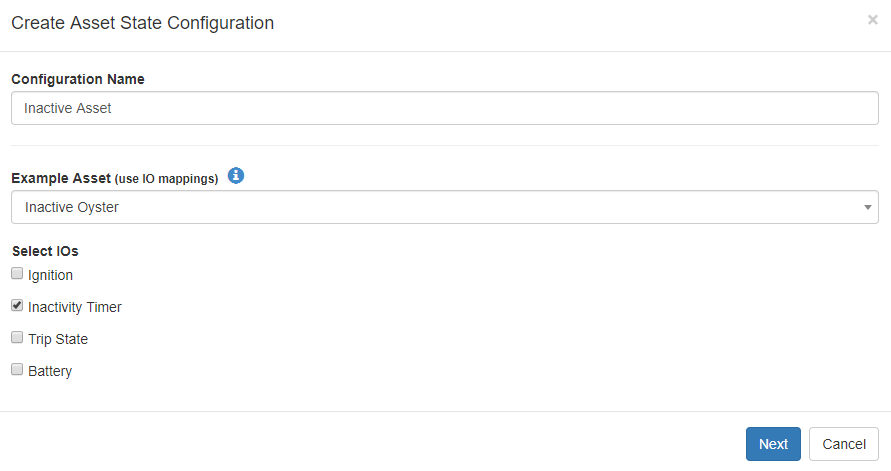
Once you've selected the Digital I/Os that you're creating the asset state on, click Next On this screen you can name the different states and set the colours to change as to the state of the input/output. The example below shows the Asset as red when Digital input 2 is active (Inactivity Timer's conditions in OEM Server have been met) and Green when it has not been triggered.

The Logging options are displayed on the next screen, you can choose between Logging of Distance, Duration, Geo-Fences or Speeds during different states.
For the Inactivity timer, we are going to select to create logs for the beginning and end of changing to the state of 'Inactive Tripped' and select to record the Duration.
The other logging options do not make sense to track since the asset is not moving if it is inactive.
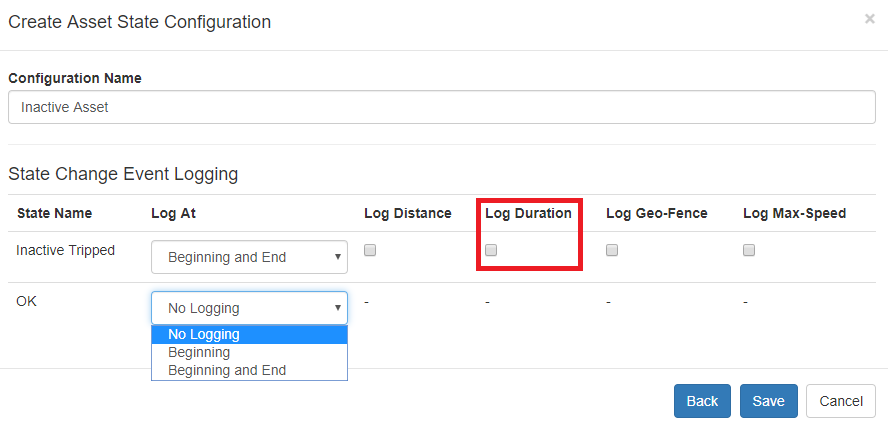
Now all that is left to do is to assign the Asset state to the Asset.
In Assets > Manage Assets select the Asset you've created the state for and navigate to the Advanced tab. Under Asset State Configuration change the drop down menu to reflect the state you've configured.
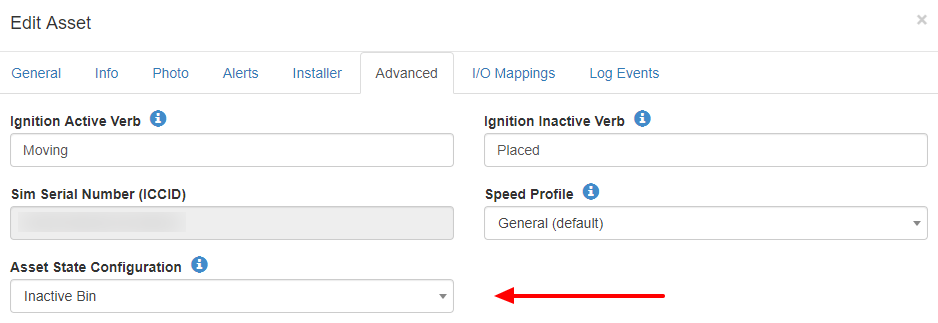
Viewing Assets State Changes on the Live View
| In the Live map, the Asset list on the right hand side of the screen shows a few different options. To show Asset State changes on the live map, you simple need to change the drop down menu from Classic Colours, to Asset States. | 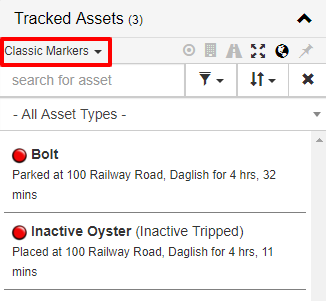 |
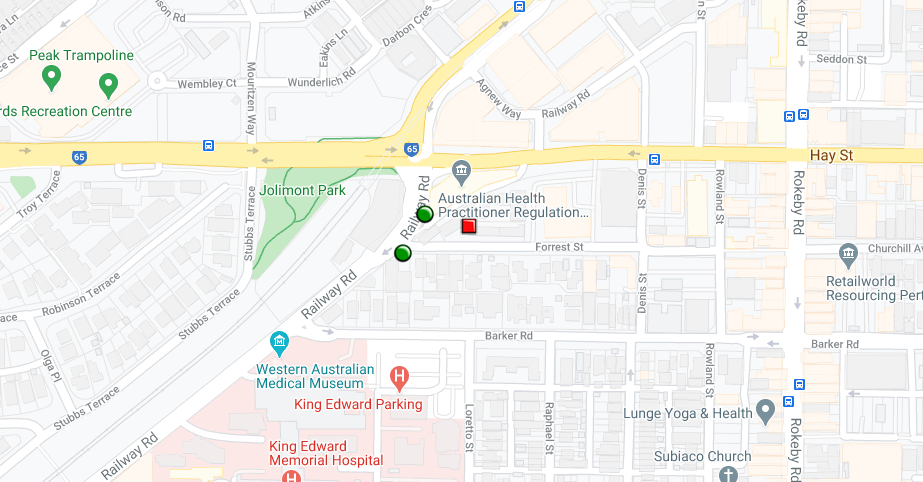
Using a Customised Asset List Report
Using a customised version of the Asset list report details the assets by Asset Type and generates how long the asset has been inactive at a specific location. see Example below, where a tracker has been Parked at DMA Head Office for 3 hours 54 minutes. This does not require the inactivity timer to be set up. However, we must be set up to track trips.
The location time is simply:
Current Time - End Time of the last trip
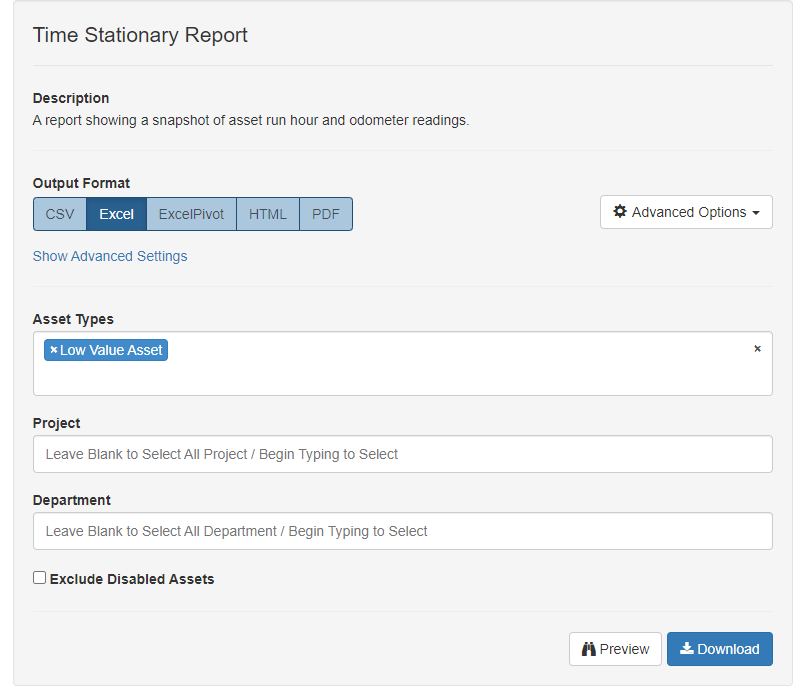

Step 1) Navigate to Reports > Asset List, click on the Advanced Options Cog and select Customise report .You can name your custom report, and then select Next to proceed to Step 2.
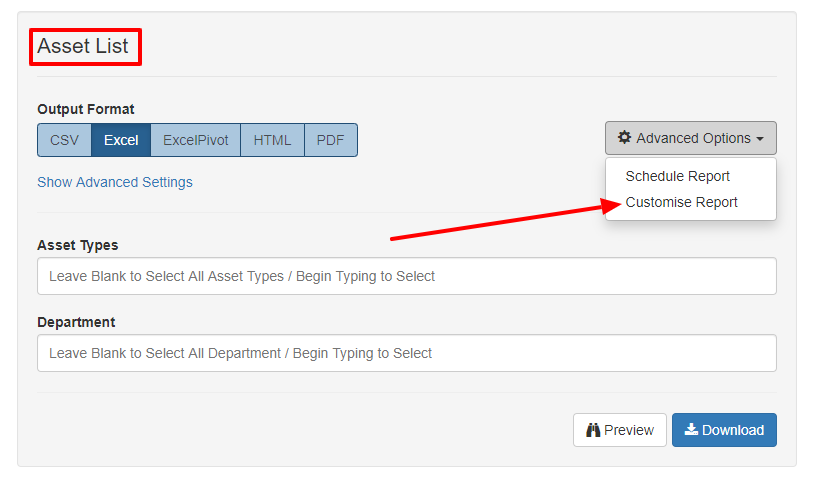
Step 2) There are a lot of options to select in the custom Asset List, the minimal amount of information to make the report make sense, are the following options. The order that they appear in the list are the order left to right that they will print.
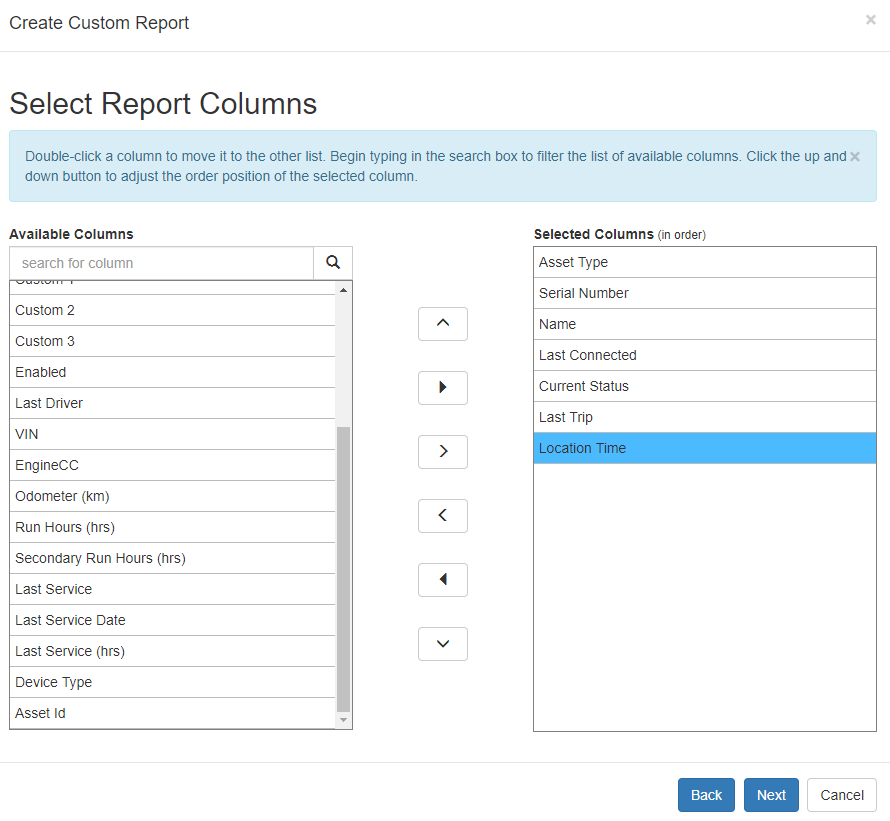
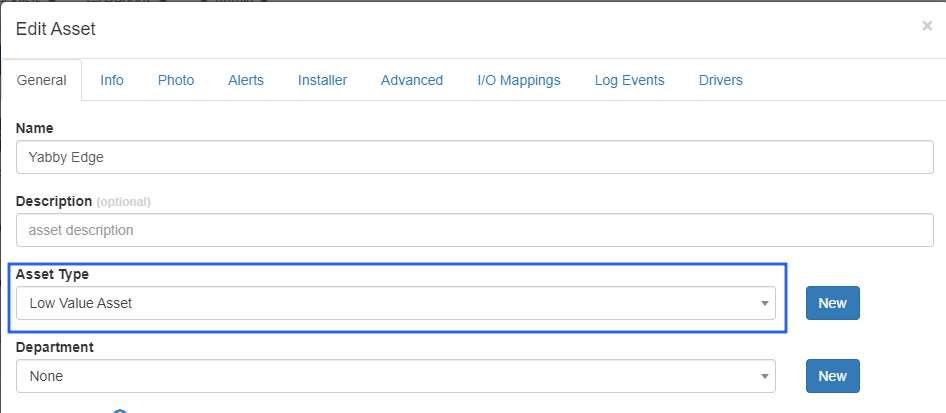
Next Steps
For more information about Asset States, please see Asset State Configuration.
